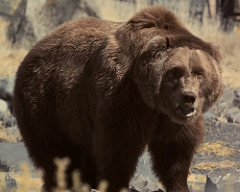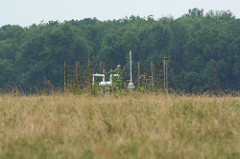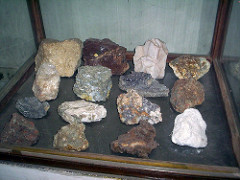Renewable and Non-Renewable Resources
Unlock all answers in this set
Unlock answersquestion
nonrenewable resource

answer
Oil
question
renewable resource

answer
Wildlife
question
renewable resource

answer
Air
question
nonrenewable resource

answer
Coal
question
renewable resource

answer
Solar
question
nonrenewable resource

answer
Natural gas
question
renewable resource

answer
Water
question
renewable resource

answer
Plants
question
nonrenewable resource

answer
Rocks and Minerals
question
renewable resource

answer
Wind
question
renewable
answer
can replace itself through reproduction, be re-grown, or can renew itself naturally, can be living or non-living.
question
non-renewable
answer
can not reproduce or renew itself, once non-renewable resources are used, they are gone forever.
question
harvesting
answer
taking any resource including water, from earth's surface
question
local environment
answer
all the living and non living things in a particular area.
question
raw-materials
answer
resources before they are turned into products human use, for example, trees are raw materials for lumber and pulp and paper
question
water cycle
answer
the natural recycling of water on earth so it can be used over and over again, water recycles through evaporation, condensation, and precipitation.
question
surface runoff
answer
precipitation that runs along the surface of the land until it flows into a stream, river, lake, or ocean.
question
groundwater
answer
precipitation that goes into the ground, groundwater that is not brought to the surface will eventually flow into a stream lake, or river.
question
watershed
answer
an area of land that drains into a river or lake, precipitation that falls on a watershed either flows down to the river or lake, or sinks into the ground.
question
leaching
answer
the process of carrying substance such a chemicals into the ground with ground water.
question
soil pollution
answer
the state of soil that has been made unclean by chemicals and other harmful substance.
question
water pollution
answer
the state of water that has been made unclean by harmful substance or organisms that can make animals and plants sick.
question
solar energy
answer
energy that comes from the sun, solar energy can be changed into heat or electricity.
question
what do you think renewable means?
answer
can replace itself through reproduction, be regrown or can renew itself naturally. (living or non-living)
question
Why are some resources considered renewable?
answer
These resources are almost always there for us to use.
question
living renewable resources
answer
A living resource produces more of it's kind while it lives and then it dies.
question
Living renewable resources
answer
plants grow from seeds. Fish reproduce by laying eggs.
question
non-living renewable resources
answer
Non-living renewable resources are almost always there for us to use.
question
non-living renewable resources
answer
wind, water, air, sun
question
What does harvesting means?
answer
taking any resources including water, from earth's surface.
question
How did Aboriginal people conserve salmon?
answer
They used traditional fishing methods and did not catch a lot of salmon at a time.
question
What is aquaculture?
answer
fish farming.
question
What does processing mean?
answer
changing natural form to another form.
question
Why are salmon processed?
answer
1. preserve 2. change way
question
Name two traditional methods of processing salmon
answer
1. Air Dry or smoking 2. salting salmon
question
Name four modern methods of processing Salmon
answer
1. canning 2. frozen 3. smoked 4. sold fresh
question
Why do salmon need protecting?
answer
The number of salmon in BC is much lower than it was in the past.
question
Tree are natural resources. List five different ways you use this resource.
answer
Ply wood, paper, card board, toilet paper, paper towels.
question
How are BC forests logged?
answer
- clear cutting (more in the past) - selective logging (more common) - helicopter logging (coastal areas)
question
What is the impact of logging?
answer
- bark, twigs and mud can collect in streams and rivers. - this can destroy animal habitat. ( especially salmon)
question
What products are made from the raw materials?
answer
2 main kinds of products 1. lumber products: plywood, furniture, shingles. 2. pulp and paper products - paper, card board, toilet paper, paper towels.
question
What three things are being done in BC to reduce the impact of logging?
answer
1. laws 2. certain areas X logging or less 3. replanting
question
How did Aboriginal people use forests in the past? How is it same as how forests are used today?
answer
Past - Shelter, transportation, cooking, clothing, medicine.
question
How do you use water every day?
answer
Before School: Brush, shower, drinking, wash face During school: Drink, wash hands, wash desk. After school: Cook, drink, toilet.
question
Soil pollution
answer
what happens when chemical and other harmful substance get into the ground.
question
Watershed
answer
an area of land that drains into a river or lake
question
surface runoff
answer
when water runs over the surface of the land into a stream, lake, or ocean.
question
water cycle
answer
how earth recycles fresh water
question
leaching
answer
when groundwater picks up chemicals and materials as it goes into the ground
question
water pollution
answer
what happens when harmful substance or organisms get into the water
question
groundwater
answer
water that has seeped into the water
question
Natural Resources
answer
animals-reproduction plants - regrown sunlight - end less supply water - water cycle renews it
question
Condensation
answer
Process in which water vapor turns back into liquid water.
question
Evaporation
answer
Process in which liquid water changes to water vapor.
question
Examples of natural resources
answer
Trees, soil, and minerals
question
Examples of nonrenewable resources
answer
Oil, gas, and coal
question
Examples of Precipitation
answer
Rain, sleet, and snow.
question
Precipitation
answer
Water that falls to earth.



